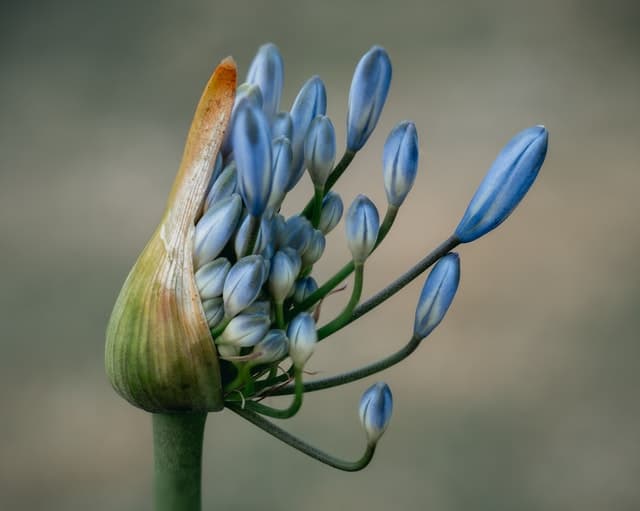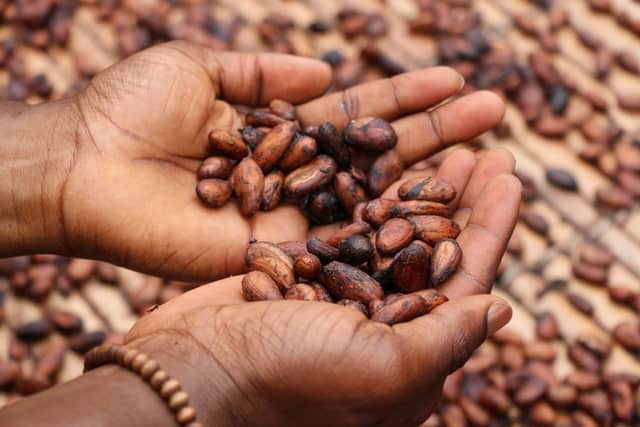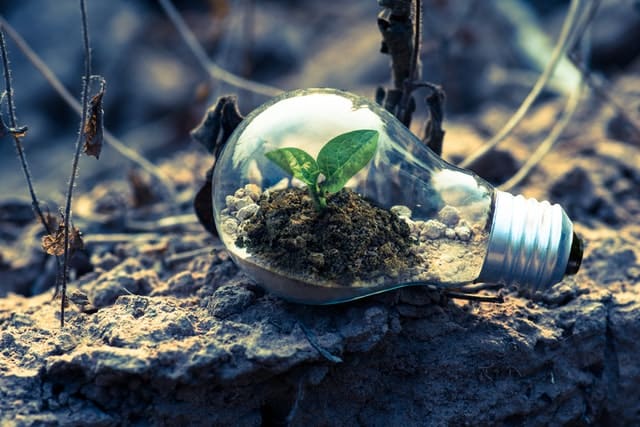There are two very similar ways of growing plants which are growing them from seeds or bulbs. Seeds can come in the forms of conifers, pitted seeds in fruits for example or even regular flower seeds. Bulbs can also be mistaken for other underground storage structures such as corms tubers or rhizomes.
The problem comes when plant are capable of being grown healthily using both bulbs and seeds and you don’t know which to go with so in this article the questions is answered. Bulbs vs seeds, which is better?

Table of Contents
What are bulbs?
Bulbs are rounded underground stems that have fleshy structures. People often confuse corms, tubers and rhizomes with bulb as they work in similar ways with different biology.
They are the resting state of many seeded plants. This means a plant can lie resting for a long time where favorable growing conditions aren’t present. Often during the winter or during droughts. In this way plants with bulbs don’t ever die, unless they stay dormant for too long.
They wait for the right conditions to grow again and get to the stage of producing seeds. When favorable conditions do come about the plant then feeds off of the outer leaves of the bulb to create a stem that will penetrate the soil surface and form a new plant.
This is important in evolution because plants may not get to be able to produce pollinated seeds every year so must rely on re-growing from a bulb every year to maximize their chances and produce seeds, rather than dying off. And when they do grow from bulbs they have an advantage of having access to nutrients straight away. Causing fast beginner growth.
Some of the most common forms of a bulbs are:
- Daffodils
- Onions
- Tulips
- Garlic
- Alliums
What are seeds?
The definition of a seed is “an embryonic plant enclosed in a protective outer covering”. They are formed after fertilization of pollen by bees and other insects that are pollinators. It takes two different flowers on the same plant or separate plants to create a fertile plant and hence a seed.

Before pollination, seeds were ovules inside flowering plants or flower like structures waiting to be fertilized and create the seed which is capable of propagating new plant life in the right conditions.
What is the main difference between bulbs and seeds?
The difference between seeds and bulbs is very obvious. Seeds are small embryonic organic matter that stores energy and is yet to meet the right conditions to grow. They are also often a lot smaller than bulbs and are the FINAL stage of a plants reproductive cycle. Seeds can go on to from new plants entirely.
Bulbs are living plants that are in a dormant stage and they are the first part of the growth of a plant whereas seeds are the final stage of reproduction of the plant.
Why plant bulbs?
Weighing up the pros and cons of bulbs may help you make a decision and it is useful to know what you are getting in to before you set about on planting in numbers.
Pros
- You can plant them once and not have to worry about replanting it every year if they due
- You can plant a variety of bulbs that all flower at different time of the year so your outdoor space can always be teeming with life and colour. For example planting a range of spring flowering bulbs, summer flowering bulbs and autumn flowering bulbs.
Cons
- Usually more expensive than seeds
- Hard to store due to them being a lot bigger and you needing to keep them in cold, dry conditions in order not to sprout.
- Bulbs can only be stores for up to 12 months usually before they either need to be planted or thrown away.
- Bulbs are often perennials so will die in the winter. You will not have flowers year round if you only work with bulbs
Why plant seeds?
In the context of this article and to keep things simple I am only considering seeds that have the potential to produce plants that grow bulbs. This is because it wouldn’t make sense to compare a daffodil grown from a bulb to an apple tree grown from a seed for example.
Perfect for if you are deciding on growing a plant that can be grown via either method.
Pros
- Can plant with a lot of variety. For example one bulbs will produce only one type of flower but a packet of seeds bought for the same price or less can produce range of flower of different colours and growing windows.
- Seeds aren’t as expensive as bulbs
- Planting seeds allows you to experiment with a wider variety of plants as all bulbs produce seeds but not all seeds produce bulbs. If you want your garden to flower in the winter when your bulb plants die then consider some winter flower varieties like Christmas rose or pansies.
Cons
- Longer growing time that may require repotting from pots to soil
- There is more of a learning curve with planting seeds. When you are growing saplings there can definitely be a few things that can go wrong.
- Seeds can get washed away if you live in a climate prone to heavy rain. Learn how to prevent this here.
Should I plant bulbs or seeds?
Whether you decide to plant bulbs or seeds is up to your outcomes of your garden. In general if you are confident on the variety of bulb and colour you want to go for an you know when you want them to flower then use bulbs

However, if you are on more of budget and want to experiment a bit more and also don’t mind if things don’t turn out exactly how you expect them to, seeds are your best option.
I recommend revisiting the pros and cons of seeds and bulbs and make a decision for yourself that suits you.
Best type of bulbs
Of course, the type of bulb you choose to grow is dependent on your personal preference and the flower you are trying to grow. Or, the type of vegetable you are trying to grow from the bulb. But some of the bulbs that produce the nicest type of flowers are:
- Daffodils
- Hyacinth
- Snowdrops
- Tulips
- Liatris
FAQ
Can a plant produce seeds and bulbs?
A plant cannot produce more bulbs but it can produce more seeds and contain a bulb. For example a daffodil that grew from a bulb can grow a lot of seeds but never “grow” a new bulb. As the bulb is in itself a part of the plant.
Can you grow seeds from bulbs?
You can in fact grow seeds from bulbs. Simply wait for your bulb plant to grow and flower and once it gets pollinated your plant should produce seeds
Do plants that grow from bulbs make seeds?
Almost all of them do yes. Given they are able to mature enough to produce seeds and get pollinated.
Onion bulbs vs seeds?
If you want to grow onions to harvest their seeds, be prepared to wait an extra year to be able to harvest them if you grow them from seed. This is because onions are biennial crops. In the first year they grow to a bulb from a seed and in the second year they regrow after winter to produce a plant and then seeds.
However, you are able to harvest onions after the first year if you grow them from seeds you just will not be able to collect the seeds as the plant will not be developed enough.
If you plant onions from bulbs, they are already in stage one of the growing cycle so they will produce seeds in the first year of planting.
Allium bulbs vs seeds?
If you strictly only care about the flowers produces by alliums then you should go straight to planting bulbs. Also, it is harder to grow alliums from seeds as sometimes seeds are hard to propagate if you don’t have the right conditions.
Tulip bulbs vs seeds?
If you plant a tulip bulb in the autumn for example it will likely bloom in the spring the following year.
However, be prepared to wait three to four years for your tulips to die and regrow year after year for them to produce flowers if you plant them from seeds
How are seeds different to spores?
The difference between the two is that spores are single celled and are already fertilized, ready to grow with the right conditions. However seeds are more complex reproductive elements that require fertilization to produce a new plant.
Peony bulbs vs seeds?
In the right conditions, peony bulbs will produce flowers and seeds every year but you will have to wait up to five year to grow a flower if you plant peony’s from seed.
If you decide to plant bulbs instead of seeds, make sure you plant your peonys only 1 to 2 inches below the surface so they get an early start to growing. Bulbs planted deeper in the soil will take longer to warm up and grow and may not flower before the summer is over.
